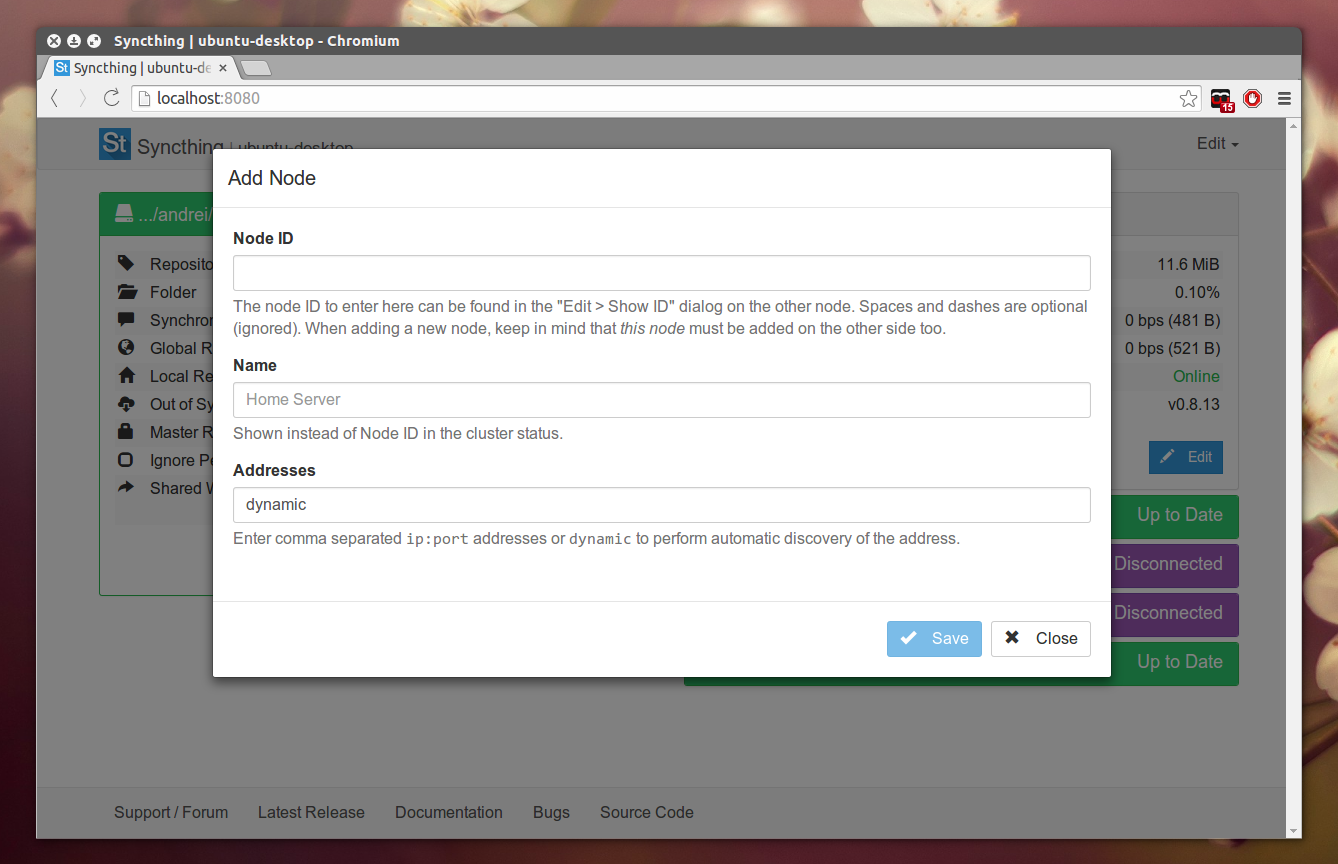

- #SYNCTHING FILE VERSIONING INSTALL#
- #SYNCTHING FILE VERSIONING CODE#
- #SYNCTHING FILE VERSIONING FREE#
- #SYNCTHING FILE VERSIONING WINDOWS#
#SYNCTHING FILE VERSIONING FREE#
There is no discussion thread right now but feel free to create one! You can also visit Syncthings's documentation to get more detailed information. If you want more information about this please check this link After XX days (can be set individually) the file will be deleted on my server but until then I am able to recover it So let's say I deleted a file on my notebook and I don't get it (empty the trash can as well) the file will be moved to a hidden folder called ".stversions" within the documents folder on the server (remember changes are synchronised all 60 seconds by default). I set up a "Versioning" option on my OMV folder "Documents" (Trash Can File Versioning) to prevent documents from beeing deleted accidentally. Most of them are self-explanatory, just want to mention the "Versioning" stuff as I find it very useful. settings I make within the WebGUI are only valid for the OMV folder and you have to set this stuff for every folder again). These settings are folder specific! (i.e. You might have noticed the "Advanced settings" section on the "Add folder" panel. For example, my local client looks like this If you have done this, Syncthing should synchronize the folder within 60 seconds (default value). If you click on "Add" you can add the information explained above (as you see, the client will automatically set the "Folder ID" correctly.

(If you did not add any other devices yet the "Share with Devices" part might be empty!) After clicking on "Save" the local client should now come up with a message The "Folder ID" is an identification string but you don't have to write it down. This is pretty easy, click on "Add Folder" and fill in the information:


Please define a "Device Name" as it makes things easier! (If you did not add any Folders yet the "Share Folders with Devices" part might be empty!)
#SYNCTHING FILE VERSIONING WINDOWS#
The necessary "Device ID" you can find within the local client (the Windows client has the same interface). Click on "Add Remote Device" on the bottom right Before we start and add a folder we have to add a remote device you want to share the data with. There are more settings but I did not checked them yet.
#SYNCTHING FILE VERSIONING CODE#
In case you want to synchronize a mobile device (Android app is available - not tested yet) there is a QR code to simplify the connection process. If you open "Actions" again you will find "Show ID". All the other options I kept default (except the "Dark Theme"). To do so click on Actions on the upper right Corner and choose "settings"ĭefine a "GUI Authentication User" and "GUI Authentication Password" - if you clear the cache and reload the WebGUI you should be asked for a username and a password. First at all I recommend to create a specific WebGUI user to prevent anyone else from access the WebGUI. You can access the WebGUI by using the IP from OMV and add the port (i.e. General settings / Add a synchronized folder / Advanced folder settings Duple states: Syncthing is P2P, so you get the disadvantages along with.
#SYNCTHING FILE VERSIONING INSTALL#
(normally you don't have to change the GUI port but feel free to do so )Ĥ.) Install the client on your local machine (see requirements) like Syncthing with an always-on client - except for the file versioning. You can activate a versioning option as well to keep all the old stuff for a certain amount of time(explained below)įollow these steps to install and pre-config the Syncthing plugin:ġ.) Install and activate the "" plugin as written in the thread mentioned aboveĢ.) Choose the Syncthing plugin (System -> Plugins -> Backup -> openmediavault-syncthing X.X), install and activate itģ.) Click on the Syncthing menu link on the left and choose "Add"ĭefine a user and in case you would like to access the WebGUI from another computer within the network change "127.0.0.1" to "0.0.0.0". If you go abroad, edit some documents and come home all devices will get the new version in no time. (Quote from )įor me its the best plugin to synchronize files to all devices connected to my server. Second way to do this would be to use a custom script as file versioning scheme, script. On the device 'sending the deletes', you might want to put the folder in mode 'send only', as you do not want it to keep 'undeleted' files from the first device. Your data is your data alone and you deserve to choose where it is stored, if it is shared with some third party and how it's transmitted over the Internet. If you really want to keep those files where they are, you would have to use a custom script. The "Syncthing" plugin replaces proprietary sync and cloud services with something open, trustworthy and decentralized. Also be aware that OMV 3.X is still under development! If you are using a different version of OMV or the Syncthing plugin your menu structure might be slightly different. Please note that this guide is based on OMV 3.0.70 and Syncthing 3.9 and the settings I used(Syncthing can do way more stuff but I don't need it at the moment).


 0 kommentar(er)
0 kommentar(er)
